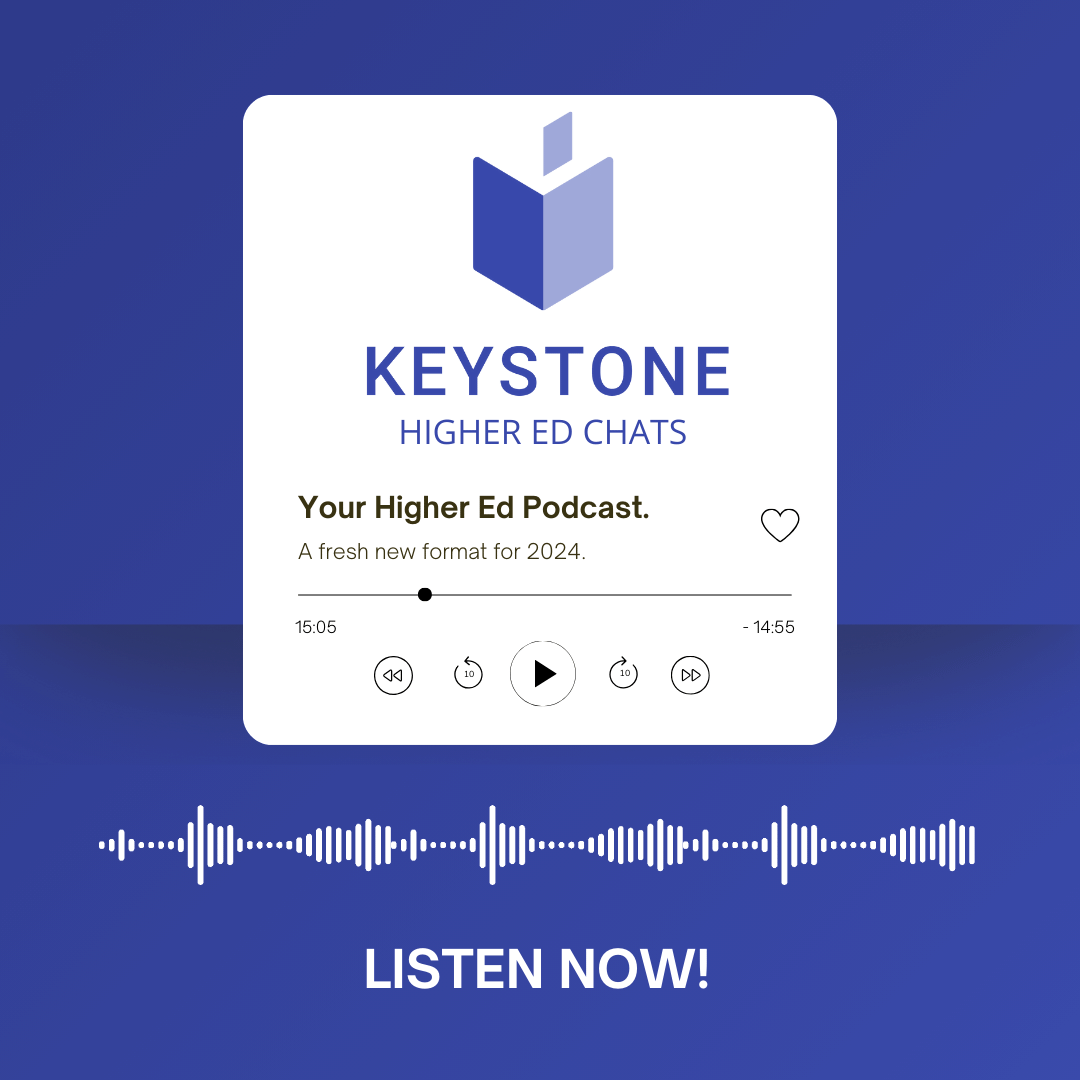- SERVICES
- HIGHER EDUCATION MARKETING
- ENGAGEMENT & ENROLLMENT MANAGEMENT
- STUDENT RECRUITMENT AGENCIES
- PROFESSIONAL EDUCATION & TRAINING
- WHO WE ARE
WHO WE ARE
Learn more about Keystone Education Group, including our leadership structure, why choose Keystone as your educational partner, and company press releases.
QUICK LINKS
- RESOURCES
RESOURCES
Find a range of helpful resources to help with your educational marketing. From on-demand webinars, reports & data, to customer testimonials and our downloadable media kit.
QUICK LINKS
- NEWS
- REQUEST A CALL

- Keystone Higher Education News
- How to Turn Your Summer Intake Into Successful Graduates
Congratulations! You’ve attracted a lot of students to your summer programs. But it doesn’t need to end after a few weeks of packed classrooms and eager learning. What if they stayed more than a month or two on your campus?
A summer school full of students is a receptive audience just waiting to form a longer relationship with your institution. Here’s how you can implement strategies that will translate your summer intake into successful graduates.
How to Capitalize on High School Interactions
There are few groups more open to exploring different study options than high school students.
High school students may be less specific in their needs than mature students who have a more precise idea of how and why they’re returning to college, and that is an opportunity for your institution. Whether your high school summer students are sitting in your classrooms, attending a campus workshop or camp, or accessing one of your courses online, you have a roster of eager, proactive learners just waiting to have their horizons broadened.
Use their captive attentions to your advantage. On-campus outreach and activities that demonstrate the community aspects of your university can help sway an undecided high school graduate towards full-time enrollment. Similarly, you can use on-campus summer camps and courses to plant the seed of matriculation in the minds of students who have yet to finish their secondary education. Well-organized, engaging online programs, on the other hand, will convince digital students of your potential in the long term, whether they continue remotely or make the leap to campus courses.
Implement language programs for international students
Your international students have already made a bold, brave commitment to study overseas. It might not take much to convince them to stay a while longer, so long as their experience away from home is inspiring and sociable.
Whatever program they’ve chosen for the summer, augmenting it with a local language course is a fabulous way to share your culture as well as practical skills that will make studying abroad easier. Optional basic language classes can strengthen that cultural bond and encourage your foreign students to stay a little longer. Pair these with outreach activities that connect international students with locals to reinforce the practical – and social – potential of your programs.
Have a service that helps with visas, financial aid, and housing
Starting out on any form of undergraduate study is always going to involve challenges and administrative hurdles – particularly for international students who aren’t familiar with the language or the norms of the host country.
When you laser those obstacles away, the path for summer school students to sign up for a longer program becomes much clearer.
Think about the worries your international students may have, and talk to them face-to-face while you have their attention. Visas, insurance, and accommodation can be tricky areas for incoming students. And like most scholars, they may have worries about financing if they’re ineligible to work in your country. Make sure that practical, easy-to-understand information is easily accessible. Work with your team to develop hands-on information sessions about immigration regulations, course registration, and student finance. Demonstrate to your incoming internationals that your team is ready – and able - to support them as they find solutions to these problems, and it will be much easier for them to make the decision to stay.
As with language programs, this is also a great time to coordinate with the surrounding community – international students, more so even than your domestic students, will be looking to connect with the areas around campus and find their home away from home.
Engage with transfer students
Students are a lot more mobile than they used to be. The word ‘swirler’ is probably no stranger to your admissions office: it describes a student who swirls between schools and programs, gathering the qualifications they need in a manner that suits their economic and career needs. In short, the Transfer Student 2.0!
But a student who transfers from school to school is not an impossible prospect to maintain. Indeed, swirling students may have a clearer idea than others precisely what they want. Engage with them while they’re in your orbit, and you have a fantastic opportunity to tailor your offering to not just the individual’s needs, but to the needs of students like him.
One way to really connect with swirling students? Demonstrate ways that your institution not only accepts but supports their nomadic tendencies. Promote clearly your transfer credit policies and prepare your academic advisors to give clear guidance to students who may be coming to campus with credentials from multiple academic channels. Give swirling students the chance to engage with programs and departments that will facilitate their mobile education. Do you have dual- or joint-degree agreements with universities in other countries? Study abroad programs that allow students to customize their degree path? Work-study agreements with local or international industries? All of these will appeal to a swirling student, giving you a chance to become his home-base.
Start (or grow) a summer program for disadvantaged students
We’ve discussed how to cater to different groups of highly-motivated students, but this ignores a vast potential market that may require a different approach.
Forty-five percent of American children are in low-income families, and almost one-third of these don’t complete high school. But it’s not a question of finance alone that holds poorer students back from applying to college. Often, it is cultural expectations or lack of confidence that drives them straight into the workplace or, as is more commonly the case than with kids from middle- and high-income families, into trouble.
Summer school is a chance to give such students a taste of what higher education can do for them, as well as to build their confidence and their network of achievers.
Pair summer school opportunities with a mentorship scheme, and it becomes a valuable way to develop the outlook of teens who might otherwise skip class and to improve their will to attend school and to explore their prospects. Mentors can be local professionals who volunteer their time to listen, care, and advise disadvantaged students within a framework developed by your institution.
Students, schools, and the local area will all benefit from an inclusive approach, and your summer school classroom will become a more diverse and inspiring place to learn.
Market your summer programs with confidence and clarity
Your university has appeal for all of the different types of summer students. But your marketing shouldn’t attempt a one-size-fits-all approach.
Utilize your marketing channels to the best of their ability and time your activities based on the type of student you are targeting. Transfer students may be able to make decisions quickly, making on-campus outreach, in-person registration, and online inquiries ideal ways to get them to engage. For high school and international students, the window of opportunity is both wide and easily closed. While they may take a longer time to commit, long-term positive exposure will ensure that they imagine your school when they plan their future.
Make sure that your programs and courses are visible where – and when – students are looking to engage. Don’t underestimate the importance of social media. Use your own channels to start a dialog with prospective students, and reach out to trusted student networks to promote your summer – and full-time programs – to students who may be unfamiliar with your institution.
More about:
Related Tags
Just For You
Top Picks
Higher Ed Chats Podcast
Listen to the latest episodes of our Higher Ed Chats Podcast - new format for 2024. Hear from Higher Ed thought-leaders from around the world!

Webinar: Dos & Don'ts of Higher Ed Social Media
.png?width=500&name=Social%20Media%20Webinar%20March%2024%20Banners%20(3).png)
Join our live webinar on 27th March to hear from a panel of Higher Ed Social Media experts.
Subscribe
to get the latest news and updates





